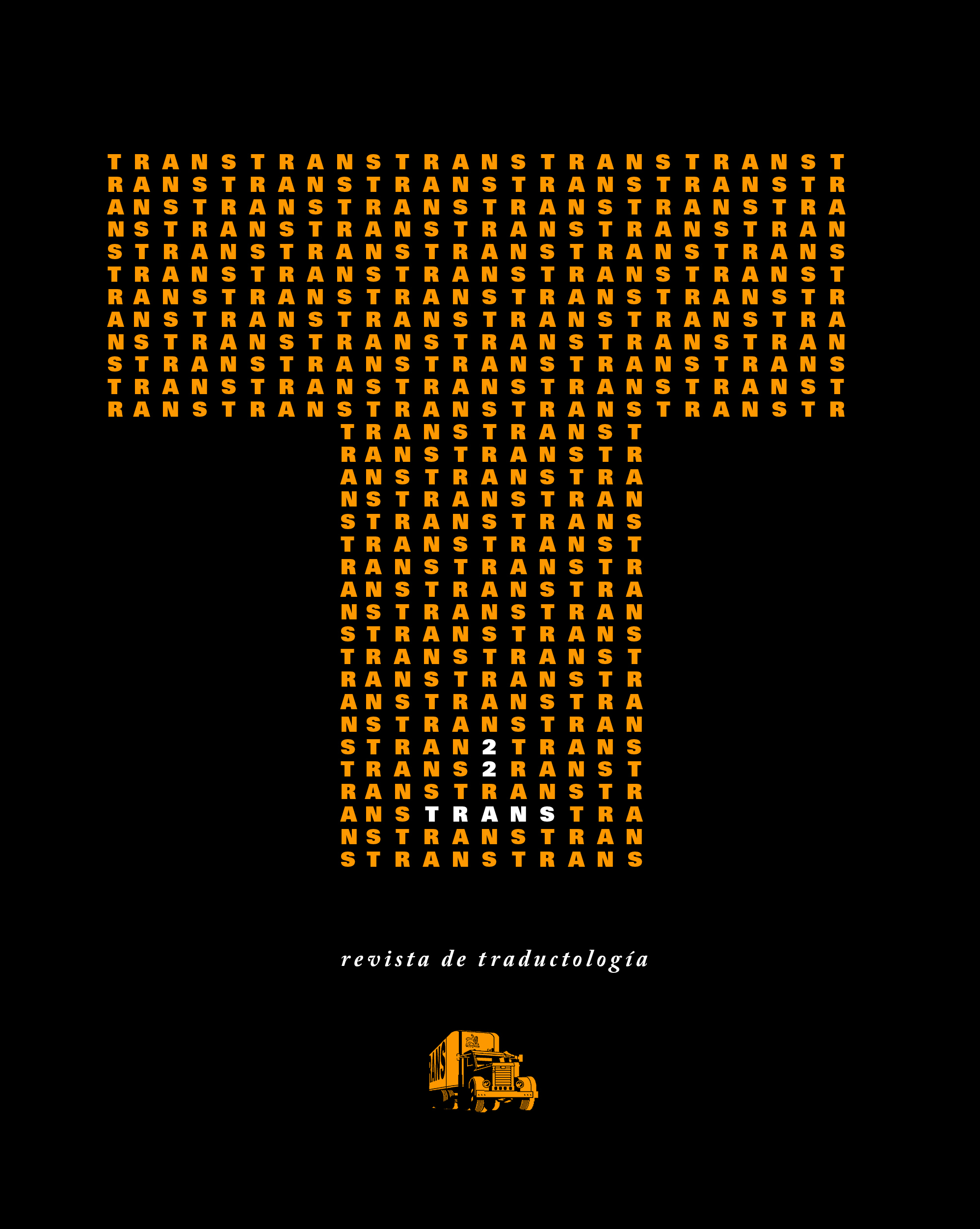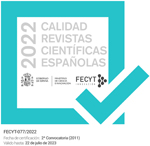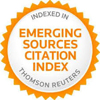The completeness of the original text in retranslation (on a poem in One Thousand and One Nights)
DOI:
https://doi.org/10.24310/TRANS.2018.v0i22.4348Keywords:
One Thousand and One Nights, Retranslation, Classics, History, Narratology, Text, PsychoanalysisAbstract
The different attitudes of the translators toward the opening poem in one of the stories in One Thousand and One Nights are linked with two relevant facts which took place during the mid decades of 20th century, namely the work of academic translators and the psychoanalytic interpretation of the book. Both favored the respect for the integrity of the original text as well as the appreciation of the general structure of the book. Facts and hypotheses relating to 1) the narrative nature of the One Thousand and One Nights, 2)
its translations to other languages in the past three centuries, 3) the retranslation of the classics, and 4) the historical nature of the translational phenomenon, are discussed.
Downloads
Metrics
Publication Facts
Reviewer profiles N/A
Author statements
Indexed in
-
—
- Academic society
- N/A
- Publisher
- Universidad de Málaga
References
ABU BAKER, Ahmad M. S. (2011): «Metamorphosis & the therapeutic function of storytelling», Cross-Cultural Communication, 7/3, 86-95.
Alf layla (¿1935?): Alf layla wa-layla, [El Cairo:] al-Ma?ba?a al-Sa??diyya.
Alf Layla (1999): Alf layla wa-layla, Beirut: D?r ??dir.
ANÓNIMO / WEIL, Gustav (2014): Las mil y una noches, Barcelona: Brontes.
BENCHEIKH, Jamel Eddine y André MIQUEL (2005): Les Mille et Une Nuits, París: Gallimard.
BENSLAMA, Fethi (2002): La psychanalyse à l’épreuve de l’Islam, París: Aubier.
BETTELHEIM, Bruno (1992) [1976]: Psicoanálisis de los cuentos de hadas, trad. Silvia Furió, Barcelona: Crítica.
BLASCO IBÁÑEZ, Vicente / MARDRUS, J. C. (ca. 1920): El libro de las mil y una noches, Valencia: Prometeo.
BORGES, Jorge Luis (1953): Historia de la eternidad, Buenos Aires: Emecé.
BURTON, Richard F. (1885): The Book of the Thousand Nights and a Night, s. l.: The Burton Club.
CANSINOS ASSENS, Rafael (1954-55): Libro de las mil y una noches, México: Aguilar.
CHEBEL, Malek (2012): «Qui es-tu, Shéhérazade?», Le Point, 20 de diciembre, <http://www.lepoint.fr/arts/qui-es-tu-sheherazade-20-12-2012-1608708_36.php> [consulta: 9-XII-2017].
CINCA, Dolors y Margarida CASTELLS (1995): Les mil i una nits, Barcelona: Proa.
CLINTON, Jerome (1985): «Madness and cure in the Thousand and One Nights», Stvdia Islamica, 61, 107-125.
CURTIUS, Ernst Robert (1948): Europäische Literatur und lateinisches Mittelalter, Berna: Francke, 2ª edición.
DESMIDT, Isabelle (2009): «(Re)translation revisited», Meta, 54/3, 669-683.
FRANKEL, Valerie Estelle (2010): From Girl to Goddess, Jefferson (Carolina del Norte): McFarland and Company.
GABRIELI, Francesco (dir.) (2006): Le mille e una notte, Turín: Einaudi.
GARCIN, Jean-Claude (2016): Les Mille et Une Nuits et l’Histoire, París: Non Lieu.
GRANDGUILLAME, Gilbert (1989): «Les Nuits parlent aux hommes de leur destin», Corps Écrit, 31 (L’Arabie Heureuse), 47-62.
GROTZFELD, Heinz (1996-97): «The Age of the Galland Manuscript of the Nights», Journal of Arabic and Islamic Studies, 1, 50-64.
GUTIÉRREZ-LARRAYA, Juan Antonio y Leonor MARTÍNEZ MARTÍN (1965): Las mil y una noches, Barcelona: Vergara.
JULLIEN, Dominique (2016): «La guérison par l’exemple: morale, politique et exemplarité dans les Mille et Une Nuits et leur hypertexte», Féeries, 13, 145-163.
KHAWAM, René R. (2007): «Introducción», en Las mil y una noches, ed. René R. Khawam, trad. Gregorio Cantera, Barcelona-Buenos Aires: Edhasa.
LANE, Edward William (1853): The Arabian Nights’ Entertainments, New Edition, Boston: Little, Brown and Company.
LEE, Minyong (2010): «Storytelling as therapy and its two modalities: Myth and Arabian Nights», Journal of Humanities Therapy, 1, 145-156.
LITTMANN, Enno (2004) [1921-28]: Die Erzählungen aus den Tausendundein Nächten, Fráncfort del Meno-Leipzig: Insel.
MACNAGHTEN, William Hay (1839): Alif Laila, or Book of the Thousand Nights and one night, commonly known as The Arabian Nights, Calcuta: The Baptist Mission Press.
MARVASTI, Jamshid A. (2004): Psychiatric Treatment of Victims and Survivors of Sexual Trauma, Springfield (Illinois): Charles C. Thomas.
MARZOLPH, Ulrich y Richard VAN LEEUWEN (eds.) (2004): The Arabian Nights Encyclopedia, Santa Bárbara-San Diego-Óxford: ABC-CLIO.
MONTERO, Rosa (2011) [¿1998?]: «Contra la muerte: Las mil y una noches», en El amor de mi vida, Barcelona, Penguin Random House, posiciones 3133-3289 (versión digital Kindle).
PEÑA MARTÍN, Salvador (2018): Mil y una noches, 2ª edición, Madrid: Verbum.
PEÑAFLORIDA, Ainhoa (2003): «Tiempo de Sherezade», El País, 2 de abril, <https://elpais.com/diario/2003/04/02/paisvasco/1049312416_850215.html> [consulta: 18-XII-2017].
REYNOLDS, Dwight F. (2006): «A Thousand and One Nights: A history of the text and its reception», en Roger ALLEN y D. S. RICHARDS (eds.), Arabic Literature in the Post-Classical Period, Cambridge University Press, pp. 270-291.
SALLIS, Eva (1999): Sheherazade Through the Looking Glass, Londres-Nueva York: Routledge.
AL-SAMMAN, Hanadi (2015): Anxiety of Erasure: Trauma, authorship, and the diaspora in Arab women’s writings, Syracuse University Press.
SAMSÓ, Julio (1975): Antología de Las Mil y Una Noches, Madrid: Alianza.
VERNET, Juan (2005): Las mil y una noches, Barcelona: Galaxia Gutenberg-Círculo de Lectores.
WARNER, Marina (2011): Stranger Magic: Charmed states & the Arabian Nights, Londres: Vintage.
ZIPES, Jack (20072) [1999]: When Dreams Came True: Classical fairy tales and their tradition, Nueva York-Abingdon: Routledge.
Downloads
Published
How to Cite
Issue
Section
License
All contents published in TRANS. Revista de Traductología are protected under the Creative Commons Attribution-NonCommercial-ShareAlike 4.0 International (CC BY-NC-SA 4.0) license. All about this license is available in the following link: <http://creativecommons.org/licenses/by-nc-sa/4.0>
Users can copy, use, redistribute, share and exhibit publicly as long as:
- The original source and authorship of the material are cited (Journal, Publisher and URL of the work).
- It is not used for comercial purposes.
- The existence of the license and its especifications are mentioned.
- ShareAlike — If you remix, transform, or build upon the material, you must distribute your contributions under the same license as the original.
There are two sets of authors’ rights: moral and property rights. Moral rights are perpetual prerogatives, unrenounceable, not-transferable, unalienable, imprescriptible and inembargable. According to authors’ rights legislation, TRANS. Revista de Traductología recognizes and respects authors moral rights, as well as the ownership of property rights, which will be transferred to University of Malaga in open access.
The property rights are referred to the benefits that are gained by the use or the dissemination of works. TRANS. Revista de Traductología is published in an open access form and it is exclusively licenced by any means for doing or authorising distribution, dissemination, reproduction, , adaptation, translation or arrangement of works.
Authors are responsable for obtaining the necessary permission to use copyrighted images.













21.png)
